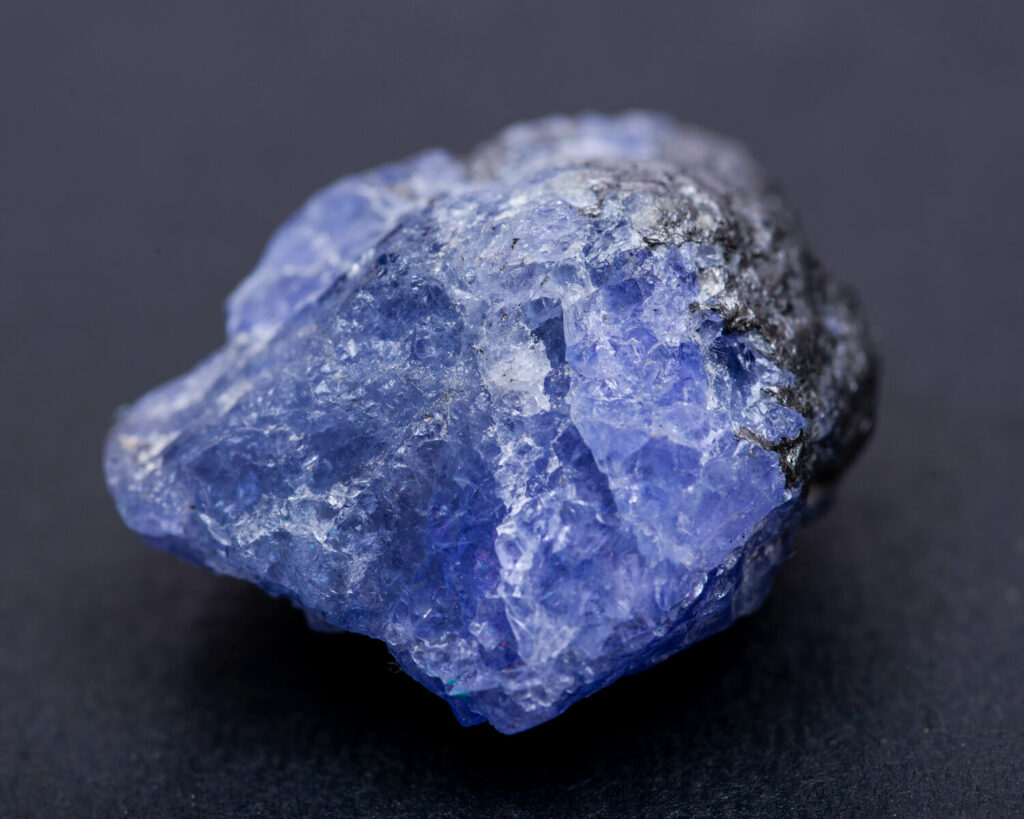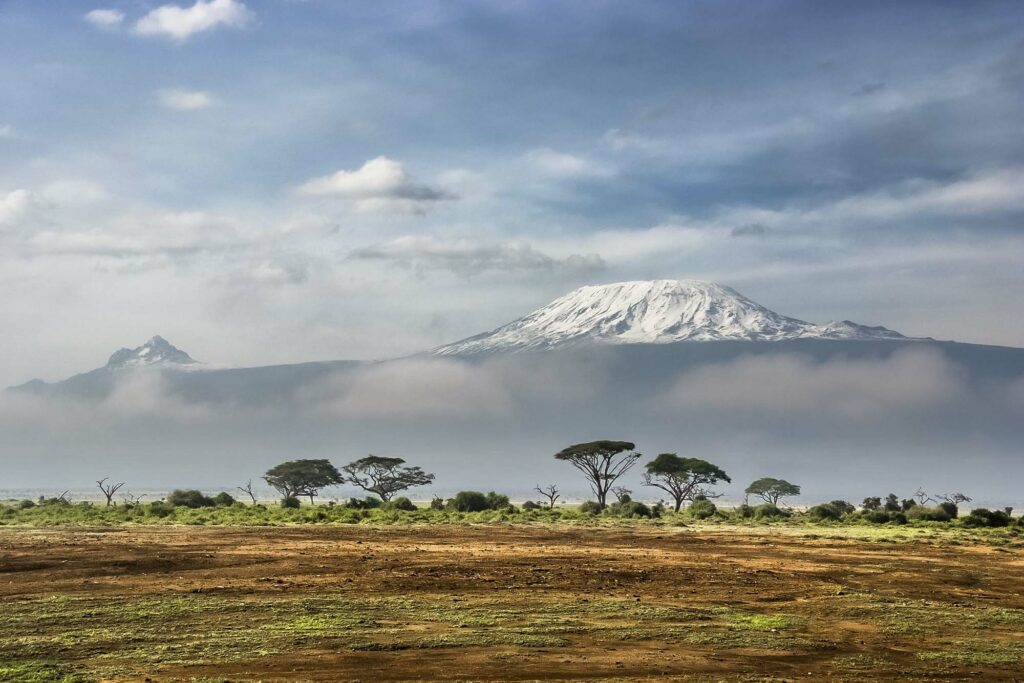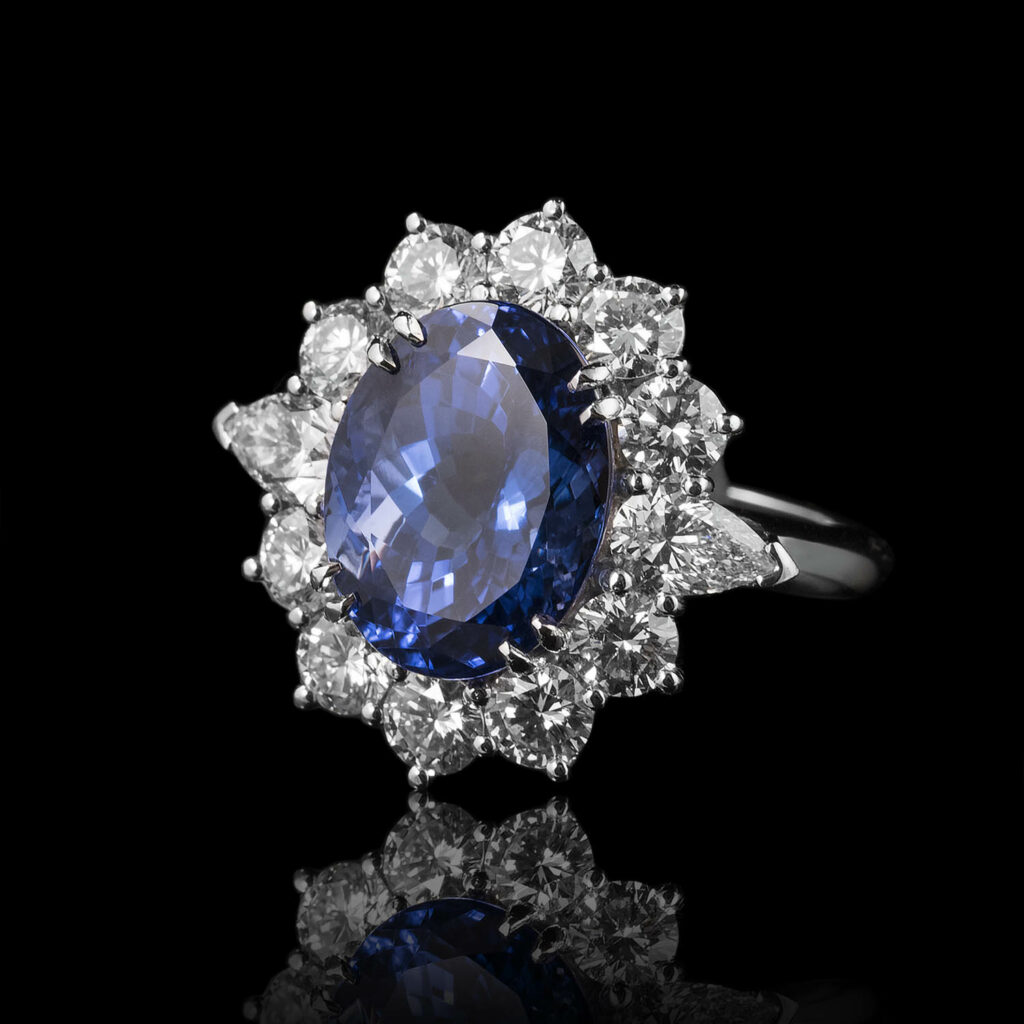

Tanzania
If the name didn’t give it away already, tanzanite stones are found in only one place on Earth – Tanzania, Africa. What is it that makes this locale a hotbed for sparkling blue gems? Tanzanite’s geological rarity and striking purple-blue color make them an exceedingly attractive gemstone that’s used around the world in jewelry and holistic healing.
Tanzanite Stone History
Tanzanite is relatively new to the gemstone market, especially compared to centuries-old gemstones like emeralds and sapphires. Though it has existed for hundreds of millions of years below the Earth’s surface, tanzanite wasn’t uncovered until 1967, when a Masai tribesman stumbled upon a stone that he believed to be sapphire in northern Tanzania. A local prospector named Manuel d’Souza concluded upon further inspection that the stone was not sapphire, but a new, previously undiscovered gemstone.
Dozens of other sightings were recorded after this discovery throughout a small region of northern Tanzania. One year later, in 1968, Tiffany & Co. would lay claim as the sole distributor of the stone and shortly thereafter unveil the world’s newest gemstone: Tanzanite. Tiffany & Co. chose the name as a tribute to its country of origin.
Tiffany & Co. advertisements for tanzanite quickly went multinational. All of which marketed the fact that tanzanite could only be found in two places worldwide, “in Tanzania and Tiffany’s.” Catchy, isn’t it?
Tanzanite Healing Properties
You may wonder: what is tanzanite good for as far as healing and spirituality? A whole lot, it turns out. Wearing a tanzanite ring or necklace may help you realize and actualize your true life calling. Anyone navigating the world and feeling lost or unfulfilled can wear tanzanite to benefit from the stone’s psychological and spiritual properties.
Did we mention that tanzanite stone is absolutely gorgeous? So while you heal, you’ll look good, too!
Can tanzanite be worn everyday? While tanzanite does offer pretty significant healing properties, it is to be worn with caution. For some wearers, tanzanite may cause lethargy, which makes sense considering all the life-changing revelations you may experience.
A side effect of the healing process is that tanzanite can bring up repressed feelings, emotions, and memories that the wearer might not be ready for. Whenever you practice crystal healing, be sure to acquaint yourself with the potential side effects of each gem before beginning.
Aside from this revelatory, deep introspection that wearing tanzanite invites, this purple-hued gem can awaken your creativity and encourage you to pursue creative outlets, according to holistic healers. If you’re looking to break old habits and develop new, healthy patterns in your life, wearing tanzanite is a great start!
Wearing a high-quality tanzanite stone can intensify the gemstone’s metaphysical properties, allowing you to vibe higher and achieve higher levels of self-actualization and life purpose. Tanzanite stone astrology can empower you to discover your true purpose in life.
Fortunately, there are a few ways to test the quality of each tanzanite gemstone. Whether you want to buy tanzanite stones for healing purposes or to rock in stunning jewelry designs, you’ll want to familiarize yourself with the following buying factors.
Tanzanite Gemstone Properties and Buying Factors
Gemologists rely on an industry standard for determining a gemstone’s value and desirability: The 4 C’s, and next we’ll outline how each of these qualities influences a tanzanite’s value and price.
Color
Like many colored gemstones, color is an important way to determine value. When we talk about color, we’re not simply referring to one quality, but several, because within each color are factors like saturation, hue, tone, and brightness. What color tanzanite is most valuable?
With tanzanite stones, good saturation is critical. A more saturated stone is by far more valuable than a low saturated stone, whether it’s purple or blue-violet, however, most collectors prize true blue tanzanites above the rest. One of the most important factors of tanzanite is how vividly the color comes through. The most saturated, vivid purple colors make for the most desirable tanzanites.
Color intensity can be hard to measure when buying a stone online, so it’s important to buy from reputable sources like Gem Rock Auctions who provide in-depth information about each gemstone. Look for product photos featuring varying angles, and a product video is always a helpful aid.
If you want nothing short of the best, buy tanzanite stones with rich, intense color saturation and ask for them to be photographed in different lights against multiple backdrops.
Clarity
A gem’s clarity grade needs to be flawless to qualify as top quality. The range of clarity for tanzanite stones is vast, and a gemstone can fall pretty much anywhere on the spectrum. Make sure to have the stone’s clarity inspected by an expert because it plays an important role in the value.
Cut
What role does cut play in tanzanite value? Like many gems, many tanzanites are cut in India using techniques to maximize the carat weight content. However, these cuts can significantly reduce the quality of a stone (usually by around 30%) and that’s why every gem should be cut by an expert lapidary (gem cutter). Cutting for weight retention often results in windowing, reduced brilliance, bad symmetry, and difficulty when setting the stone in jewelry.
When purchasing a tanzanite stone, look for a high-quality cut, as it can make a world of difference in overall value. Tanzanite cut is a factor often overlooked by buyers. However, a premium cut will naturally cost premium pricing. Paying attention to the features of a high-quality gem cut will save you time and money in the long run.
Carat Weight
Of all the 4 C’s, weight is probably the least important value factor for tanzanite. The tanzanite mined since 1967 had 585 million years to reach its current state, so massive, high-quality tanzanite stones are unbelievably rare. As a result, a smaller carat stone with high rankings in color, cut, and clarity retains a higher value than a large stone with low saturation and high inclusions.
In an episode of Travel Channel’s Gem Hunters, gemologist Ron LeBlanc heads to Tanzania on a quest for a large (20 carat), high-quality tanzanite gemstone for a client. However, the task is riddled with challenges as finding a quality stone that large is exceedingly rare. After scouring the market, mines, and dealers across Tanzania for a week, rejecting large, lower-saturated gemstones, Ron finally hunts down a beautifully saturated, high-quality, monster 17-carat blue tanzanite gemstone.
But for most of us, a high-quality, lower carat tanzanite is perfectly satisfying!
The most important note when purchasing tanzanite is to buy from trusted sellers. Ask questions and do some intensive research. And of course, always inspect the gemstone yourself whenever possible.
Treatments
One glance at tanzanite and you’ll be captivated by the color, but does it occur so beautifully in nature? Despite the stone’s brilliant blue and purple hues, all tanzanite receives heat treatment to transform its natural brown color into a radiant blue to purple gemstone. Heat treatment is a stable enhancement that doesn’t affect the gem’s durability or gem features aside from color.
There are some naturally blue tanzanites, but these are considered a phenomenon rarely seen or come across. Heat treatment is an acceptable, non-invasive enhancement used to make the stones more beautiful.
Care and Maintenance
Here’s where the cut of your stone becomes really important. A well-cut tanzanite stone needs to be set perfectly to ensure that it stays in place. If you’re only buying the stone, do research on the cut and talk to your jeweler about how it will be set into jewelry. Tanzanite is only slightly higher than mid-level hardness so it can incur damage like chips, scratches, and cracks.
To clean tanzanite, warm, soapy water is always safe. Avoid detergents, bleach, or other harsh solvents that can potentially damage your stone. A good rule of thumb when it comes to cleaning gemstones is to use no more than a soft bristle toothbrush and to scrub very gently.
Keep in mind that routine care and maintenance are important to a stone’s value and longevity, so make it a habit and your gems will remain tip-top!

What is a tanzanite stone worth? Great question!
Tanzanite Stone Prices and Value
Tanzanite derives most of its value from its rarity. As far as we know, tanzanite only forms in one place on Earth, and the mining area is pretty small at that. Like all limited resources, demand increases as supply is diminished. In 20 years, there may no longer be a supply of new tanzanite, which means that any existing tanzanite in the market will skyrocket in value and price.
For tanzanite stones with good color, cut, and clarity, one carat can go for about $200-350. Flawless, saturated, perfectly cut pieces can sell for as much as $1,200 per carat, and larger stones with similar qualities will go for even more.
In 2020, a Tanzanian mining team uncovered the two largest solid pieces of tanzanite in recorded history. Weighing in at 9.27 kilograms and 5.103 kilograms, the stones are a geological marvel. Saniniu Laizer, leader of the small-scale mining team that discovered the stones, sold them to the Tanzanian government for 7.7 billion Tanzanian shillings ($3.3 million USD).
